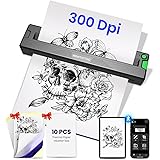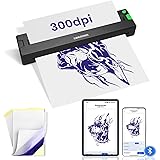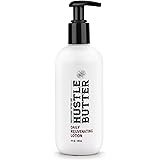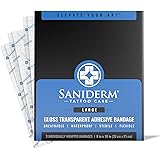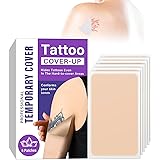Do you ever wonder how people create beautiful, personalized designs with letters? The video above gives a quick glimpse into the magic of hand lettering. It shows how simple strokes transform into stunning art. This creative journey is easier than you think. Let’s explore how to begin your own lettering adventure.
What is Hand Lettering and Why Try It?
Hand lettering is essentially drawing letters. It is not traditional calligraphy. Calligraphy follows strict rules for letterforms. Hand lettering offers more freedom. You can express your unique style. It combines drawing, design, and writing.
Many people find hand lettering very relaxing. It is a wonderful creative outlet. You can make cards, posters, or personalized gifts. It helps improve focus and artistic skills. You can start with basic supplies. No fancy art degree is needed.
Discovering the Joy of Lettering Art
Lettering art brings text to life. It makes words visually interesting. You can create unique visual messages. Think about all the possibilities. From personal notes to professional logos. Hand lettering is a versatile skill.
Watching the video, you see the potential. Simple movements create beautiful results. You can add flourishes and embellishments. Imagine creating a starry effect. Or a sparkling design. It is all part of the fun.
1. Gathering Your Basic Hand Lettering Tools
Getting started with hand lettering needs few items. You probably have some already. Don’t worry about expensive equipment. Simple tools work perfectly. This makes it accessible for everyone.
You will need some basic paper. Plain printer paper is a great start. Or use dot-grid paper for guidance. A pencil and an eraser are essential. These help you sketch your designs first. Then you can refine them.
Essential Tools for Beginners
Start with a simple brush pen. These pens come in many colors. They have a flexible tip. This allows thick and thin lines. A fine-liner pen is also helpful. It is great for details and outlines. Good quality pens make a difference. But always start simple.
Consider a ruler for straight lines. A light pad can be useful too. It helps trace designs easily. Keep your supplies organized. This makes practice more enjoyable. Soon you will build your collection.
2. Understanding Basic Lettering Techniques
Every hand lettering artist starts somewhere. There are fundamental techniques. Mastering these builds confidence. They are the building blocks. You will quickly see progress.
The core concept is “thick down, thin up.” When your pen moves down, press harder. This creates a thick line. When moving up, lighten your pressure. This results in a thin line. This contrast makes letters pop.
Practicing Your Strokes and Shapes
Start by practicing basic strokes. Draw straight lines, both up and down. Then try curved lines. Focus on consistent pressure. Practice ovals and circles next. These form the basis of most letters.
Don’t be afraid to make mistakes. Mistakes are part of learning. Use your pencil first. Sketch your letters lightly. Then go over them with your pen. This method builds your muscle memory. It also reduces frustration.
3. Simple Exercises to Improve Your Lettering Art
Consistent practice is key. Short, regular sessions are best. Try to practice for 15-20 minutes daily. This builds skills quickly. You will see improvements every time.
Download free practice sheets online. Many artists share them. They provide guidelines and drills. Use these to trace and learn new forms. Copying others is a great start. It helps you find your own style later.
Making Practice Fun and Engaging
Write your favorite quotes. Or your name in different styles. Experiment with various fonts. Try drawing letters with a pencil first. Then ink them in carefully. This helps refine your design.
Draw simple shapes like stars. Then try to incorporate them into words. The video shows this creative play. Think about adding a shimmering effect. Or tiny starbursts around your lettering. This adds a unique sparkle.
4. Adding Flair: Beyond Basic Hand Lettering
Once comfortable with basics, explore more. You can add shadows to your letters. This gives them a 3D effect. Drop shadows make letters stand out. They add depth to your work.
Experiment with different colors. Use colored brush pens. Or add watercolor washes. Blending colors creates beautiful gradients. This makes your lettering art vibrant. It adds more visual appeal.
Creating Starry Effects and Embellishments
To create effects like the video, use fine-liner pens. Draw small stars around your words. Or add tiny dots for sparkle. You can use a white gel pen. It makes highlights and reflections. This brings your letters to life.
Consider adding flourishes. These are elegant extensions. They flow from letters naturally. Scrolls and swirls add sophistication. But always ensure they are readable. They should enhance, not distract, from the hand lettering.
5. Overcoming Common Hand Lettering Challenges
Every artist faces challenges. It is normal to feel stuck. Don’t compare your beginning to someone’s middle. Your progress is unique. Keep pushing through any difficulties.
Inconsistent line thickness is common. This improves with more practice. Focus on your grip pressure. Shaky lines also improve over time. Slow down your strokes. Take deep breaths as you work.
Tips for Continued Improvement
Join an online lettering community. Share your work and get feedback. Learn from other artists. Watch tutorials and live demos. There is always something new to discover. Staying inspired is crucial for any creative pursuit.
Remember, hand lettering is a journey. It is not about perfection. It is about expression and enjoyment. Celebrate your small victories. Each new letter you master is a step forward. Keep practicing your beautiful lettering art.






